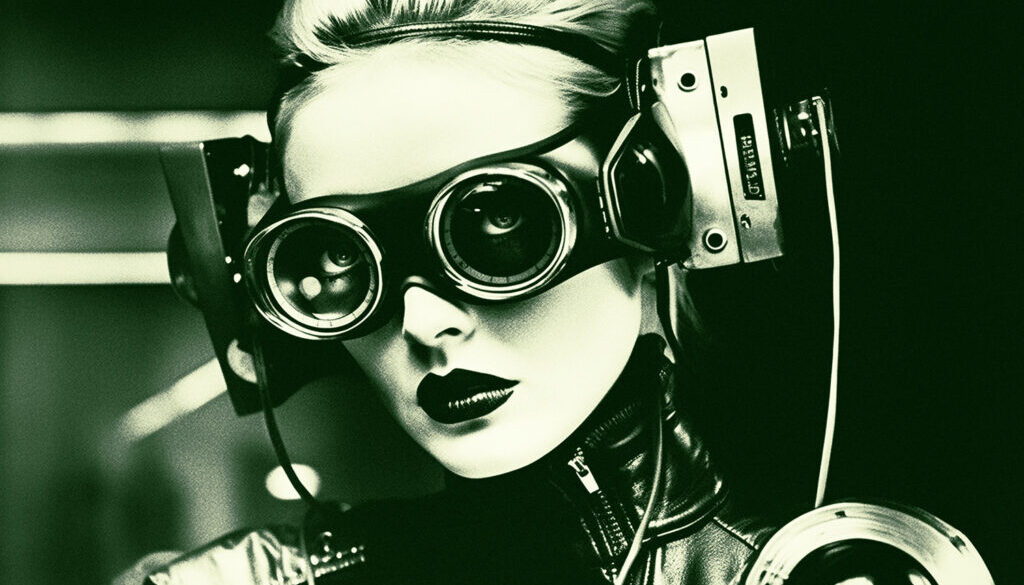How does AI art work?
AI art is a broad term that encompasses various techniques and approaches where artificial intelligence (AI) is used to create or assist in the creation of artwork. The specific workings of AI art can vary depending on the particular method being employed. However, I can provide you with an overview of some common techniques used in AI art creation.
- Generative Adversarial Networks (GANs): GANs consist of two neural networks—the generator and the discriminator—that work together to generate new content. The generator network creates images based on random noise, and the discriminator network evaluates the generated images for authenticity. Through an iterative process, the networks learn from each other, with the generator trying to create more realistic images and the discriminator improving its ability to differentiate real from generated images. GANs have been used to create various forms of AI art, including paintings, images, and even music.
- Style Transfer: Style transfer techniques involve applying the artistic style of one image onto another image. Convolutional neural networks (CNNs) are commonly used to extract style and content information from two different images. The CNN analyzes the style of a reference image and applies it to the content of a target image, resulting in a new image that combines the content of the target image with the artistic style of the reference image.
- Neural Style Transfer: Neural style transfer takes style transfer a step further by using deep neural networks to achieve more sophisticated results. It involves training a model with a large dataset of artwork to learn the style representations. Once trained, the model can apply those learned styles to new input images, creating a fusion of the content and style.
- Data-Driven Approaches: Some AI art techniques utilize large datasets to train models that can generate new artistic content. For example, a dataset of paintings or photographs can be used to train a model that can create new images based on the patterns and styles it has learned from the data. These models can generate new artworks that mimic the characteristics of the training dataset.
- Interactive Art and Creative Tools: AI can also be used to create interactive art installations or tools that assist artists in their creative process. For instance, AI algorithms can analyze user inputs, gestures, or audio-visual stimuli to generate responsive visuals, music, or other artistic outputs. These interactive systems often incorporate machine learning techniques to adapt and respond to user behavior in real-time.
It’s important to note that AI art is not solely about AI autonomously creating artwork; it often involves collaboration between human artists and AI systems. Artists can use AI as a tool, drawing inspiration from its capabilities and combining them with their own creativity to produce unique pieces of art.
Overall, AI art explores the intersection between human creativity and the computational power of AI, enabling new and innovative artistic expressions.
The data used for AI art can come from various sources, depending on the specific technique and goal of the artwork. Here are some common data sources for AI art:
- Existing Artwork: Many AI art techniques rely on existing artwork as their primary data source. Large databases of paintings, drawings, photographs, or other visual art forms can be used to train models that learn the patterns, styles, and composition present in the data. These models can then generate new artwork that is inspired by or emulates the characteristics of the training dataset.
- Image Datasets: AI art techniques like GANs or style transfer often use general image datasets that include a wide range of visual content. These datasets can consist of diverse images collected from the internet or curated collections, encompassing various subjects, styles, and genres. By training on such datasets, AI models can learn to generate new images that blend different visual elements.
- User Inputs: In interactive AI art installations or creative tools, the data can come from user inputs. For example, an AI-based system may prompt users to provide images, text, or audio, which are then used as input for generating or modifying artwork. The AI system processes and interprets the user inputs, and based on predefined algorithms or machine learning models, generates artistic outputs that are personalized to the user’s input.
- Sensor Data: Some AI art installations incorporate real-time data from sensors, such as cameras, microphones, or motion sensors. These sensors capture environmental data, human interactions, or other dynamic inputs, which are then processed and transformed into artistic outputs. The AI algorithms interpret the sensor data and generate responsive visuals, sounds, or interactive elements based on the captured information.
- Synthetic or Generated Data: In certain cases, AI art may not rely on existing datasets but instead generate synthetic or generated data from scratch. For example, in generative models like GANs, the AI system can generate entirely new images or other artwork by combining learned patterns and random noise. The AI model can create novel compositions, styles, or aesthetics without being limited to existing data.
It’s worth noting that when using data for AI art, there are ethical considerations related to copyright, intellectual property, and fair use. Artists and researchers should be mindful of the sources and rights associated with the data they employ and ensure compliance with relevant legal and ethical guidelines.

